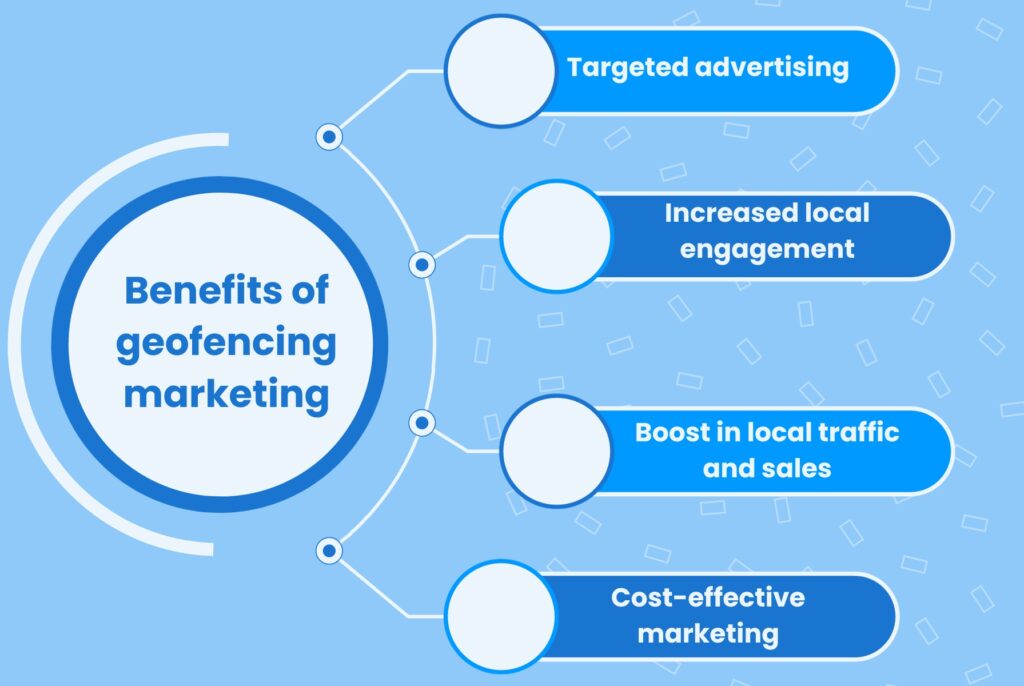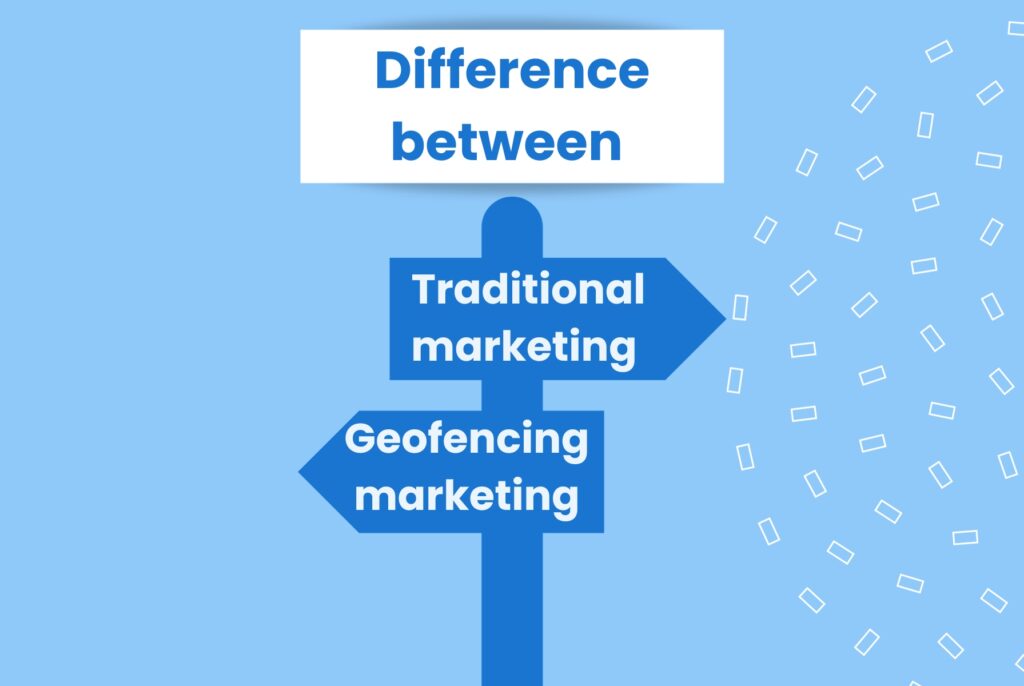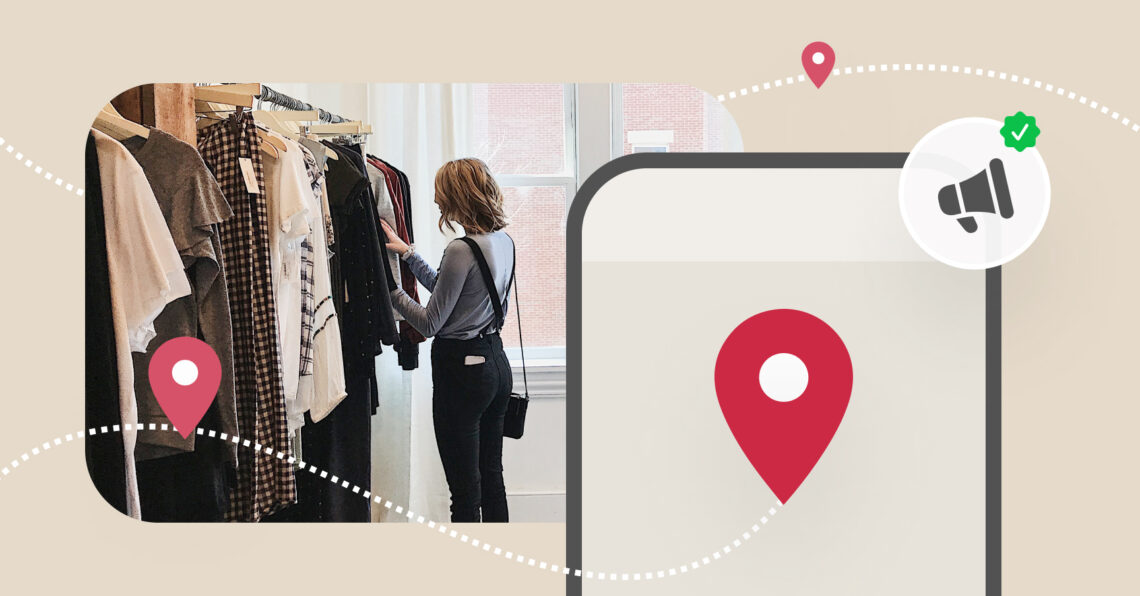Imagine walking through a town where each street corner has a storyteller ready to share a tale tailored just for you. As you move from one street to the next, the stories change, reflecting what each storyteller knows you’ll love. Geofencing marketing works similarly – It’s like setting up invisible storytelling corners around a business.
Smartphone users who enter these invisible boundaries receive personalized stories (or ads) relevant to their location. This digital marketing method ensures that the right message reaches the right person at just the right spot.
Did you know the market size of this location-based modern marketing method is valued at approximately USD 2.37 billion in 2023 and is forecasted to reach around USD 13 billion by 2032, growing at a CAGR of 20.8%?
This blog covers everything you need about geofencing marketing and how to tap into local customers and establish your authority.
Table of contents
- What is geofencing marketing?
- Why geofencing marketing is important for your business?
- How does geofencing marketing work?
- Benefits of geofencing marketing
- Tips for effective geofencing marketing
- How do you set up geofencing marketing for your business strategy?
- How to measure the success of geofencing campaigns?
- What’s the difference between traditional marketing and geofencing marketing?
- FAQs on geofencing marketing
- Pair Birdeye platforms to enhance your geofencing marketing campaigns
What is geofencing marketing?
Consider geofencing marketing as similar to a greeting system in a store. Just as a greeter at a store’s entrance might offer special deals or information to customers who walk in, geofencing sends tailored messages or offers to people when they enter a specific digital boundary around a location, like a virtual greeter.

This approach ensures that promotions are relevant and timely as if they were personally welcomed and informed upon entering a physical store.
It uses GPS, RFID, Wi-Fi, or cellular data to trigger a targeted advertising action (like a text, email, or app notification) when a mobile device enters or exits a specific geographic area, known as a geofence. This technology allows businesses to send relevant ads to nearby potential customers.
For example, a coffee shop can send a discount offer to people within a one-mile radius. This strategy effectively promotes local businesses and offers, attracts nearby customers, and increases foot traffic.
Why geofencing marketing is important for your business?
According to recent studies, 53% of consumers have acted on a geofence alert containing a special offer or discount. This substantiates that implementing geofencing marketing is important for your business.
Here are a few reasons it helps improve your business:
1. Enhanced targeting and personalization
Geofencing allows you to send highly targeted and personalized messages to potential customers based on their location. This means you can tailor your marketing strategies to align with the context and needs of your audience.
2. Increased customer engagement
Geofencing can significantly boost customer engagement by targeting those physically close to your business. Offers or promotions become more relevant and timely, increasing customers’ likelihood of response.
3. Efficient use of marketing budgets
Geofencing focuses your marketing resources on a specific area, which can lead to more efficient use of your advertising budget. You’re not spending money to reach people unlikely to visit your location.
4. Gathering valuable insights
Geofencing technology provides data on how consumers interact with your ads and how often they visit your location. This information is invaluable for understanding customer behavior and preferences, helping you to refine your marketing strategy.
5. Boosting local foot traffic and sales
If you have a brick-and-mortar store, geofencing can be particularly effective in driving foot traffic. It captures the attention of potential customers in the vicinity, encouraging them to visit your store.
6. Competitive advantage
Using geofencing, you can stay ahead of your competitor’s analysis. For instance, you can target areas near competitors’ locations to attract their customers to your business.
7. Supports omnichannel marketing
Geofencing can be integrated with other marketing strategies, providing a seamless omnichannel customer experience for customers. This consistency across different channels can significantly enhance brand loyalty and customer retention.
How does geofencing marketing work?
Geofencing marketing uses location-based technology to create a virtual boundary around a specific geographical area. This boundary, known as a geofence, can be as small as a few meters or as large as an entire city.
Here is how it works:
- Setting up the geofence
- Integration with mobile
- Triggering marketing actions
- Targeted advertising
- Collecting user data
Here’s a breakdown of how it operates:
1. Setting up the geofence
A business or marketer defines a virtual boundary around a physical location using GPS, RFID (Radio Frequency Identification), Wi-Fi, or cellular data. This could be around a store, an event venue, or a specific neighborhood.
2. Integration with mobile
When a mobile device with the relevant app installed and location services enabled enters or exits this geofenced area, the technology detects it. These apps could be specific to the business or part of larger platforms that support geofencing.
Must read: Mobile SEO: What you need to know to optimize your website
3. Triggering marketing actions
Once a device crosses the geofence, pre-set marketing actions are triggered. These actions include sending push notifications, text messages, or ads to the mobile device, offering discounts, alerts about an event, or other relevant information.
4. Targeted advertising
Because geofencing is location-specific, the advertisements or messages sent are highly relevant to the user’s current situation. For example, a restaurant might send a special lunch notification to users who enter a specific area around lunchtime.
5. Collecting user data
Geofencing also allows businesses to collect valuable data on user behavior, such as how often users enter the geofenced area, how long they stay, and how they respond to the advertisements. This data can be used to refine marketing strategies.
Benefits of geofencing marketing
The major benefits of geofencing marketing include highly targeted advertising, increased local engagement, improved brand awareness, and the ability to employ a cost-effective marketing strategy. These are described below:

1. Targeted advertising
Geofencing allows businesses to send highly relevant and personalized advertisements to potential customers nearby. This targeted approach ensures that marketing efforts focus on individuals more likely to respond, leading to higher engagement rates.
2. Increased local engagement
Businesses can significantly increase customer engagement by sending timely offers and notifications when potential customers are nearby. This proximity-based approach makes it more likely for customers to visit the store or take advantage of a special offer.
Here, word-of-mouth marketing helps a lot.
3. Boost in local traffic and sales
For local businesses, geofencing is an effective tool to drive foot traffic. By targeting customers in the vicinity, businesses can encourage spontaneous visits, leading to increased sales and local brand awareness.
4. Cost-effective marketing
Geofencing is a cost-effective marketing strategy compared to traditional advertising methods. It allows businesses to spend their marketing budget more efficiently by focusing on potential customers in a specific geographic area, reducing waste and increasing the return on investment.
Navigating the World of Geofencing Marketing: Tips and Strategies
Want to see the impact of Birdeye on your business? Watch the Free Demo Now.
Tips for effective geofencing marketing
If you want to strategically leverage location-based technology to maximize the impact of your marketing efforts, here are a few tips:
- Identify high-value locations where your target audience frequently visits to increase engagement chances.
- Tailor messages to locations specifically relevant to each geofence location, making them more appealing to the recipients.
- Balance geofence size so they are large enough to cover the target area but not so large that they lose relevance.
- Respect user privacy by obtaining consent for location services and following data protection laws.
- Send messages at times when recipients are most likely to engage, like offering lunch specials in business districts around midday.
- Combine geofencing with your local marketing strategy to create a cohesive experience across all channels.
- Use data from your geofencing campaigns to understand customer behavior and preferences and refine your strategy accordingly.
- Respond to real-time data and be ready to adjust your geofencing strategy based on real-time data and feedback.
- Capitalize on local events and trends to align with local or seasonal trends, targeting users with relevant offers or information.

How do you set up geofencing marketing for your business strategy?
Effectively enhancing your brand strategy is one of the best ways to integrate geofencing marketing into your business. Here are a few starting points to consider:
- Defining specific objectives, such as boosting local traffic or promoting a product.
- Identify target locations relevant to your audience, like near your business or at popular venues.
- Choose a technology platform for geofencing and develop targeted content for the selected areas.
- If you have a mobile app, incorporate geofencing or partner with popular apps.
- Test your campaign in a smaller area before the full launch and use analytics to measure performance.
How to measure the success of geofencing campaigns?
Measure the success of geofencing campaigns by tracking key metrics such as:
- Engagement rates
- Number of notifications sent
- Foot traffic increases
- Conversion rates
Use this data to understand customer behavior and refine your geofencing strategy. Continuous optimization based on these insights can enhance the effectiveness of future campaigns.
For detailed pricing information on how Birdeye can enhance your geofencing marketing efforts, check out their pricing page.
What’s the difference between traditional marketing and geofencing marketing?
A common question for every marketer is which is a better customer acquisition strategy: traditional marketing or geofencing marketing?
Traditional marketing involves more generalized strategies like print ads, TV commercials, radio ads, billboards, and direct mail. The approach is broader and not necessarily personalized to individual consumer behaviors or locations.
Geofencing marketing utilizes location-based technology to target consumers within a specific geographic boundary. The marketing messages are delivered via mobile devices and are highly relevant to the user’s location.

While traditional marketing and geofencing marketing aim to engage and attract customers, they differ significantly in their approach, tools, and the level of personalization and interaction they offer.
The key differences between traditional marketing and geofencing marketing are rooted in their approach, technology, and target audience:
| Factor | Traditional marketing | Geofencing marketing |
| Targeting method | Broad audience targeting, often based on demographics | Precise location-based targeting |
| Delivery medium | Print, TV, radio, billboards, direct mail | Mobile devices via apps, notifications, or texts |
| Personalization | Generalized content for mass audience | Highly personalized based on user location |
| Interactivity | Usually one-way communication | Interactive, prompting immediate action |
| Data and analytics | Indirect measurement, less data-driven | Real-time data collection and analytics |
| Cost efficiency | Can be expensive with wider reach | More cost-effective, focused on targeted areas |
| Engagement timing | Not time-specific | Real-time engagement based on user location |
| Technology Dependence | Low-tech or non-digital methods | High reliance on digital and location technologies |
| Compliance | General advertising regulations | Must adhere to strict location data privacy laws |
| Customer experience | Less personalized customer experience | Enhanced experience through relevant offers |
FAQs on geofencing marketing
Geofencing marketing is a location-based digital marketing strategy that involves setting up virtual boundaries (geofences) around a specific geographic area. When a mobile device enters this area, predefined marketing actions, such as push notifications or ads, are triggered.
Geofencing marketing uses GPS, Wi-Fi, or cellular data to define a virtual boundary. When a user’s smartphone enters or exits this boundary, it triggers the delivery of marketing content directly to their device, assuming they have opted-in for such services.
To set up geofence marketing, define your target area and create a virtual boundary using geofencing software. Then, develop tailored marketing messages or offers to be triggered when someone enters the geofence.
To maximize the impact of geofencing, integrate it with other marketing channels like social media, email marketing, and online advertising. Align geofencing promotions with broader marketing campaigns for a cohesive customer experience.
Local businesses can use geofencing marketing to attract nearby customers by setting up geofences around their stores or in areas with high foot traffic. Send special offers, discounts, or event notifications to people entering these areas.
Yes, geofencing marketing can be integrated with other digital marketing strategies. It complements and enhances social media marketing, email campaigns, SEO, and advertising.
Geofencing marketing is more targeted and personalized compared to traditional methods. While traditional marketing (like TV, radio, and print ads) reaches a broad audience, geofencing targets specific users based on their real-time location, offering highly relevant and timely messages.
Pair Birdeye platforms to enhance your geofencing marketing campaigns
Birdeye platforms like Birdeye Listings and Reviews management help businesses to appear in search results and manage customer feedback effectively.
Additionally, Birdeye’s Messaging allows communication with leads through texts, webchat, and chatbots, enhancing customer engagement. Integrating geofencing marketing can lead to more targeted and effective campaigns, improving overall marketing efforts.
Click on the banner below to talk to our representative about how integrating Birdeye helps your business grow.

Originally published









